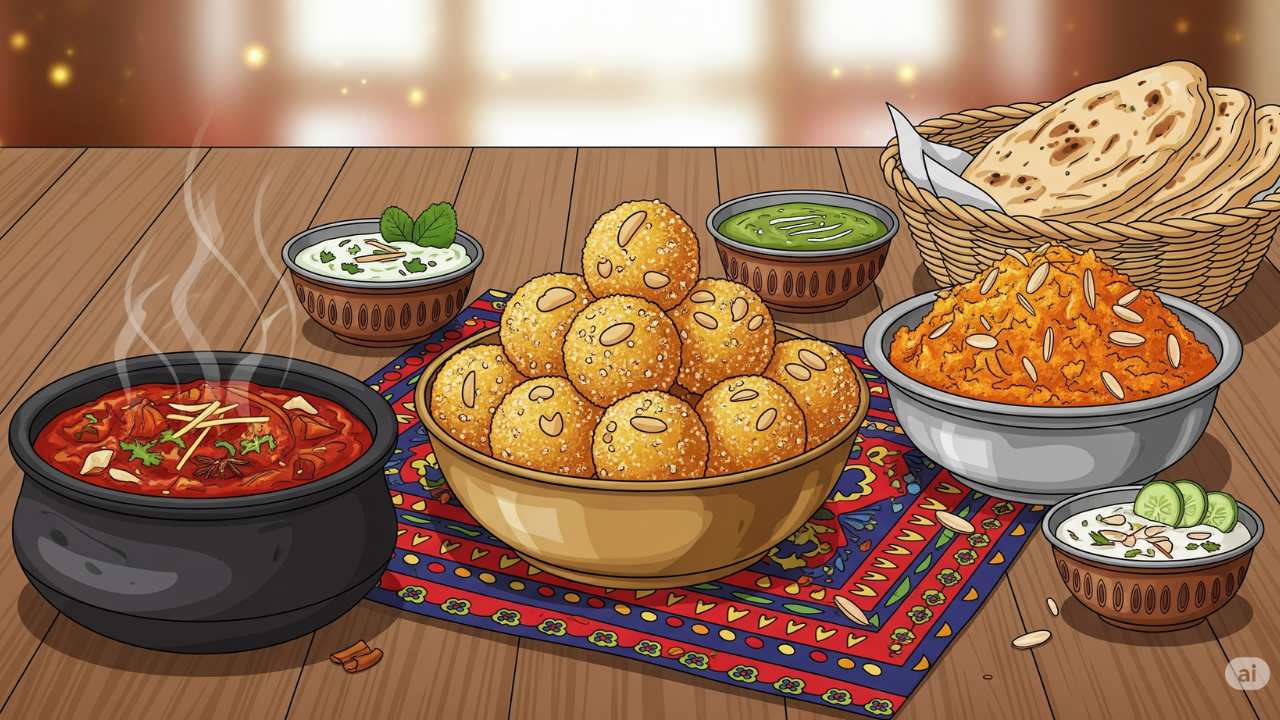Our Terms & Conditions | Our Privacy Policy
Pehli Rasoi Explained: How India’s Age-Old Wedding Ritual Evolved From Halwa In Silver Thalis To Sushi Rolls And Avocado Toast | Food
Pehli Rasoi Explained: How India’s Age-Old Wedding Ritual Evolved From Halwa In Silver Thalis To Sushi Rolls And Avocado Toast (Image Credits: AI)
If Indian weddings are the grand finale, then the pehli-rasoi is the after-party. At its heart, it has always been less about cooking skills and more about what food represents. Food is emotion, ritual, memory, and community. The one sweet dish symbolised the bride’s entry into a new household with warmth and prosperity. The ghee, the sugar, the grains – all carried cultural weight of abundance, sweetness, and nourishment.
For generations, this ritual, where a newlywed bride cooks her first dish in her in-laws’ kitchen, was a stage with laddoos, curries simmering with oil, and halwas that could feed an army of relatives. Today, brides are bringing their own menu to the table. One bride might whip up avocado toast because that is her comfort food, another might order sushi from her go-to cloud kitchen. Food delivery apps have quietly crept into this centuries-old ritual, and no one’s complaining. (Except maybe that uncle waiting for his third serving of halwa.)
 Earlier, The Ritual Was About Laddoos, Halwa And Curries (Image Credits: AI)
Earlier, The Ritual Was About Laddoos, Halwa And Curries (Image Credits: AI)
Some brides are still making the classic suji ka halwa, but others are taking their creativity to new heights. Vegan coconut halwa, dark chocolate halwa, and even sugar-free almond halwa – the same emotion wrapped in different aesthetics. Maybe somewhere, a bride is cooking their Nani’s pulao recipe because that’s their nostalgia, and elsewhere, someone’s tearing a packet of Maggi because that’s their love language.
Traditionally, the kitchen was the bride’s solo stage. Now, it’s more of a shared platter. Many couples are turning the pehli rasoi into a tag-team cook-off – him chopping onions while she stirs dal, or both laughing over burnt garlic bread. Think of it as from “Can she cook?” to “Can we cook together?”
Today, probably the mothers-in-law are the sous-chefs. They line up the ingredients, measure out the sugar, set the pan to heat, and maybe even roast the sooji in advance. The bride steps in just in time to give the kadhai a token stir, sprinkle a handful of nuts, and serve it warm. The dish is still hers, but the ritual is less about labour in the kitchen and has quietly shifted to sharing a simple, sweet moment.
 Avocado Toast And Sushi Rolls: The New Pehli Rasoi Menu (Image Credits: AI)
Avocado Toast And Sushi Rolls: The New Pehli Rasoi Menu (Image Credits: AI)
And then, some brides skip the stove altogether. They scroll through food delivery apps, pick the family’s favourite dum biryani, and time the delivery just right. The handi arrives still warm, sealed with that layer of dough, the aroma of saffron and fried onions escaping as it is opened. They transfer it into a gleaming steel pot, add a few mint leaves for garnish, and serve it up.
In the end, pehli-rasoi still carries the same aftertaste: tradition evolving, love plated differently, and a story told through food. The flavours may change with each generation, but the ritual remains a recipe for sweetness, warmth, and belonging.
Images are for reference only.Images and contents gathered automatic from google or 3rd party sources.All rights on the images and contents are with their legal original owners.



Comments are closed.